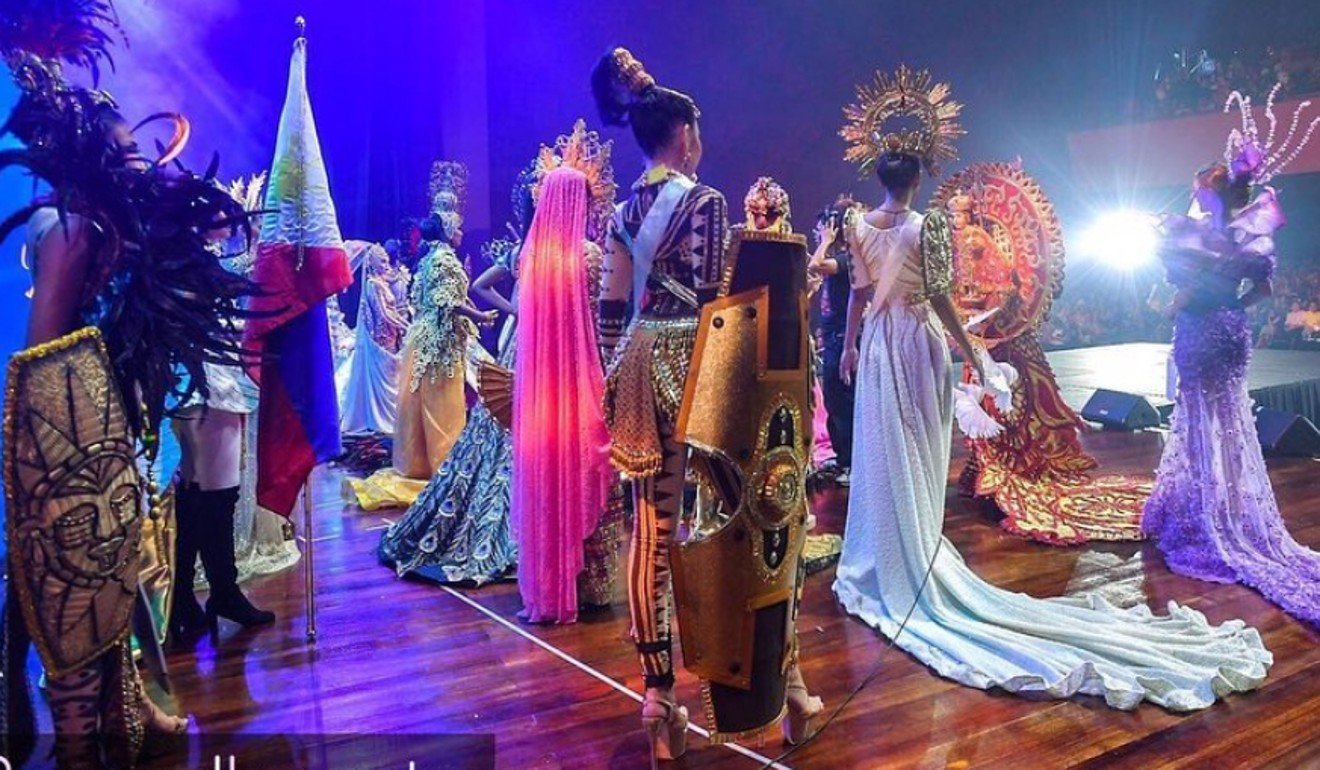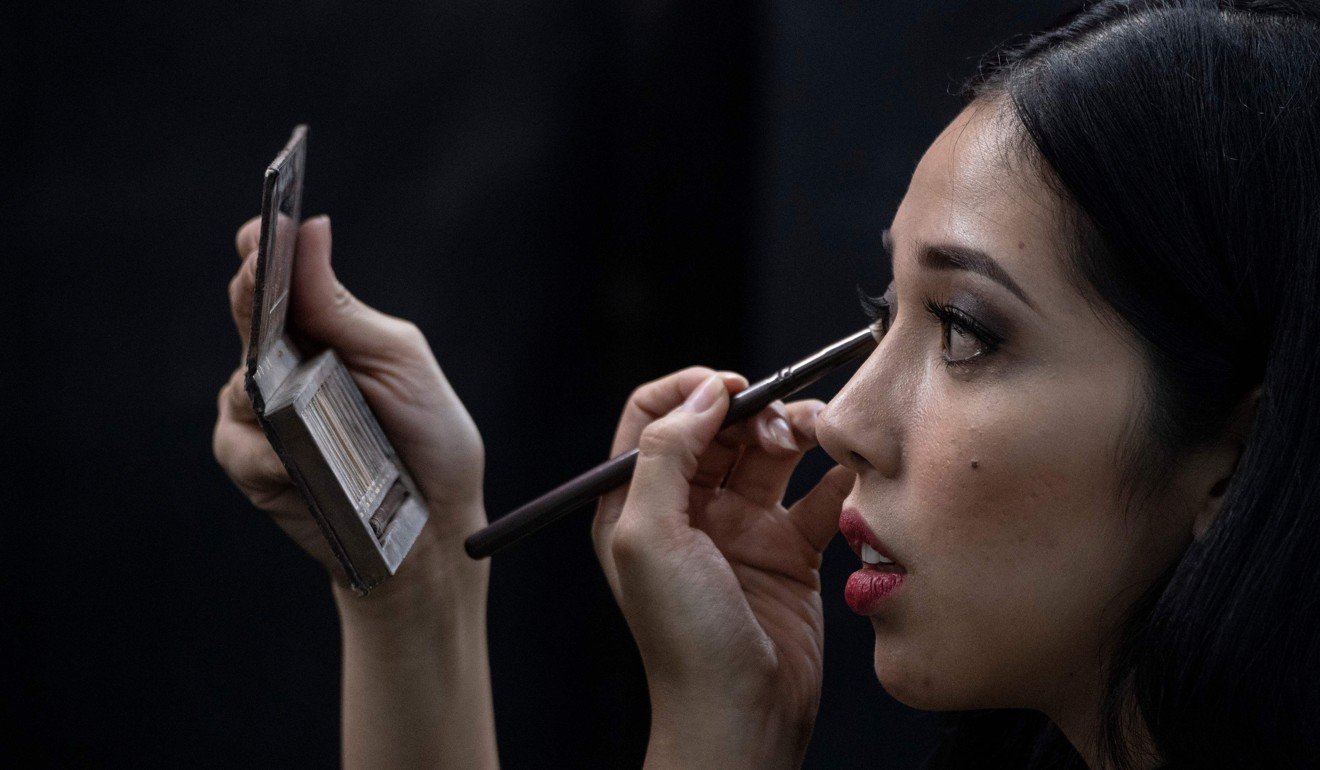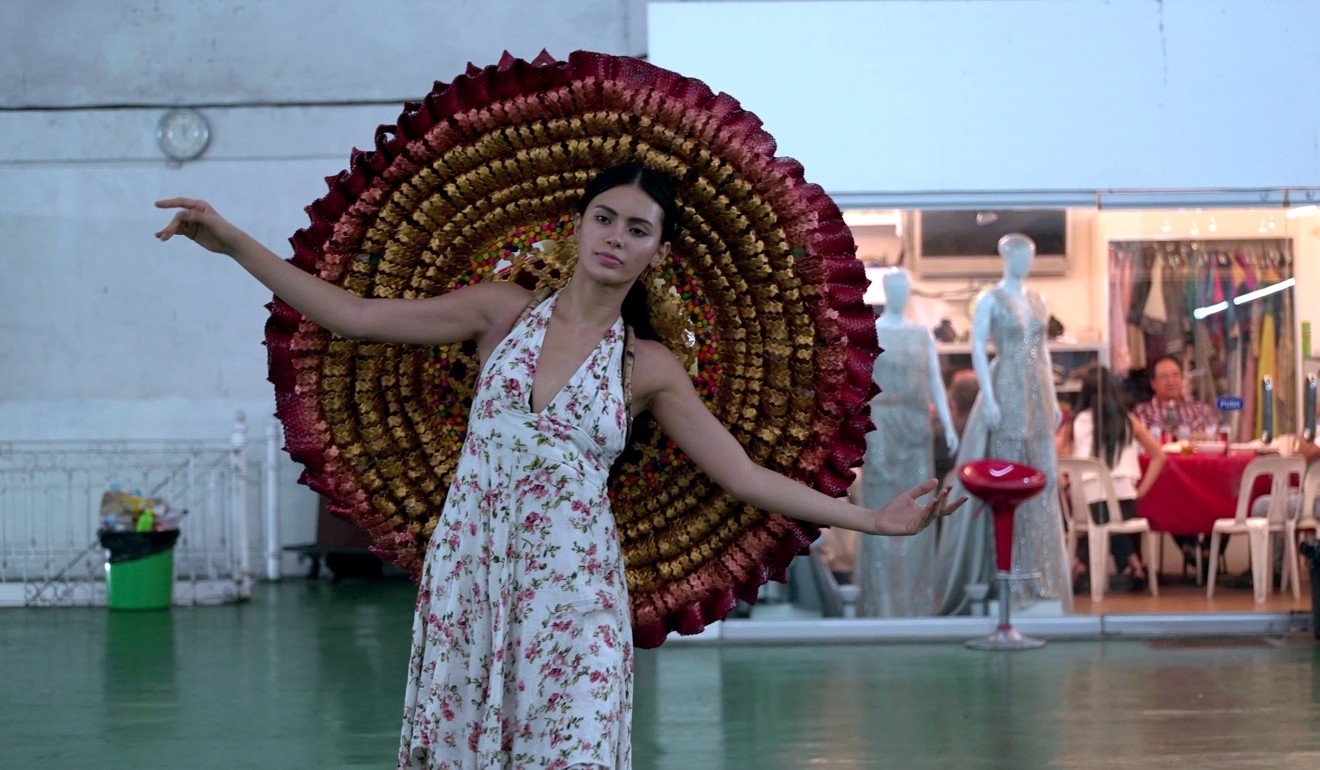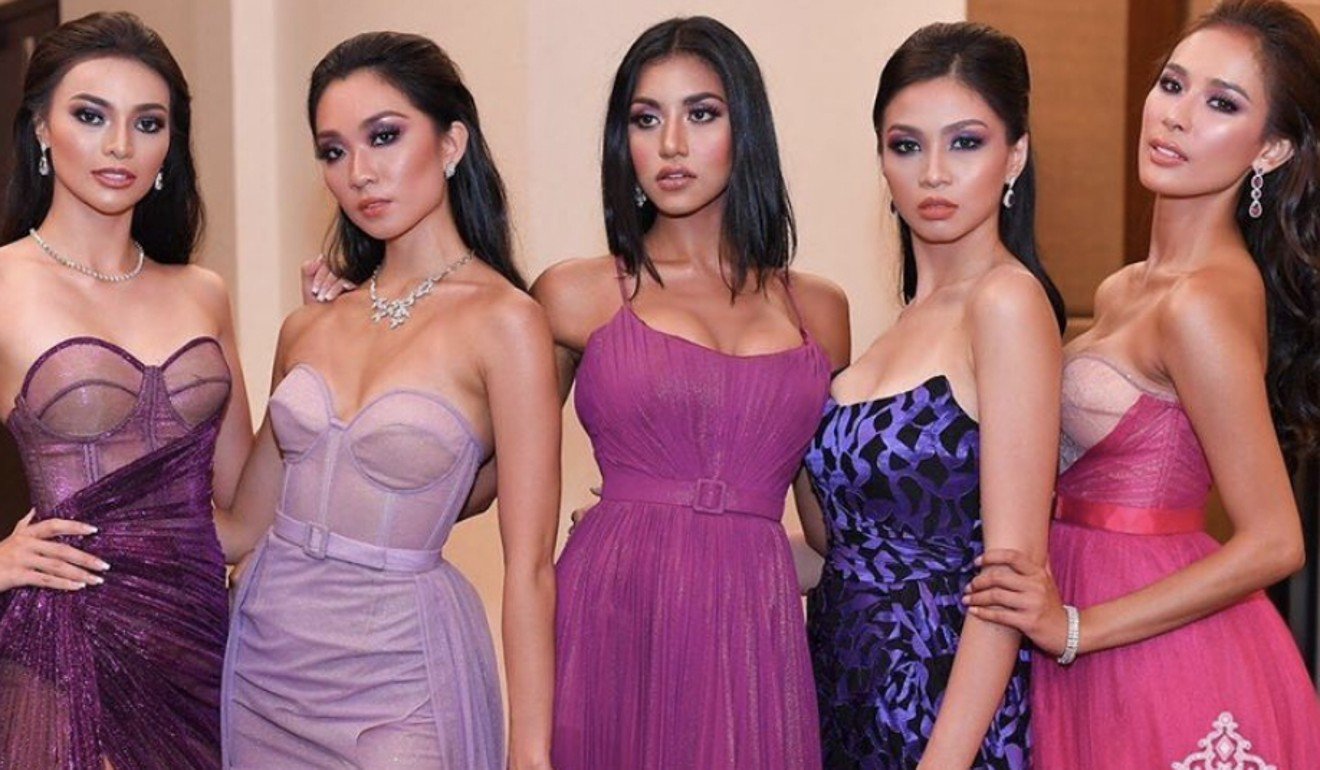What’s behind the Philippine obsession with beauty queens?
- A shallow, exploitative spectacle in an image-obsessed society? Or a valuable opportunity for young women to get ahead?
- Love it or hate it, the beauty pageant has deep roots in the Philippines, combining regional pride with glitzy spectacle

It’s nearly showtime at Manila’s Araneta Coliseum, where the annual Binibining Pilipinas beauty pageant is entering its decisive final stages. Fans have travelled from all over the country to an event where ferocious regional pride and shimmering spectacle intersect.
“It’s my first pageant but I’ve watched on YouTube many times,” says John Adriana de Ocampo, a 23-year-old make-up artist who has travelled to Manila from Laguna, waiting in line outside. “I’m so excited – I can’t wait to see the national costumes and which of them has the winning walk.”
BB Pilipinas is the country’s biggest beauty pageant. It runs for several months, culminating in the “coronation” on Sunday, June 9, when six of the 40 contestants will be presented with “crowns” and chosen to represent the Philippines at six different international pageants, including Miss Universe and Miss International.
The stakes are high: this is, after all, the pageant that launched Catriona Gray, the reigning Miss Universe and the latest Filipino to reinforce her country’s status as a beauty pageant superpower.
Tonight is the penultimate round: there’s a sponsored fashion show that pays the bills before the main event, featuring the contestants in their “national costumes” – elaborate gowns designed to tell a story about the contestants’ home provinces while infusing proceedings with the heady rush of couture glamour.
“Filipinos are really fanatics for beauty pageants,” says Louise Maneja, a 49-year-old casino manager from Pampanga. “It’s like when Manny Pacquiao fights, everyone will watch. When Catriona Gray is in Miss Universe, everyone will watch.”
Indeed, inside the stadium, the atmosphere is more akin to a boxing match than a catwalk. Trumpets blare and there are enough banners to block out the sun. Each contestant seems to have her own cheer squad, identifiable by T-shirts and giant placards adorned with their girl’s portrait. Even the Philippine national anthem, like the opening bell, is jaunty enough to pass as a show tune.
And then the prizefighters take the stage: one by one, an almighty 40-woman whirlwind of glossy dark curls and blindingly white teeth. The pandemonium intensifies. The Araneta Coliseum erupts.

‘We display our women this way’
All this is problematic, according to Nathalie Africa-Verceles, the director of the Centre for Women’s and Gender Studies at the University of the Philippines.
She does, however, find “a source of fascination in how Filipinos are so crazy about beauty pageants”.
“It’s as if we use beauty as capital,” she says. “Because they were born beautiful … it provides entry into the public sphere and provides access to opportunities these women would not have otherwise.
“It’s always been popular. The obsession seems to be intensifying … We have pageants in schools as well, and even our overseas Filipino workers organise their own pageants elsewhere, so they take this obsession with them wherever they go.”

Africa-Verceles highlights the Philippines’ legacy of Spanish colonisation and deeply rooted Catholic traditions, noting Venezuela was the apex pageant powerhouse before the Philippines surged.
“It could be rooted in a shared religious-historical context,” she says, identifying the Santacruzan procession that occurs in towns and villages around the Philippines, dating back to the 1800s, as a possible origin. “It’s like a festival parade of the most beautiful young women of the town. We were already displaying our women that way. It could be related to that, how we like to watch women parading, in succession.”
To the extent the Philippines has become a world leader in parading women in succession, Rodgil Flores can claim much of the credit. He runs Kagandahang Flores, a training centre for beauty queens. Of the 40 contestants in this year’s Binibining Pilipinas, 17 were trained by Flores. He estimates that in one year, he trains between 250 and 300 girls.
“I have girls come from all over the Philippines with different stories, different backgrounds,” says Flores, 52, seated to one side of his training base in a loft space in Manila’s Quezon City. “They meet here with one common goal: to make it to the national finals, be a queen and represent the Philippines and be an international winner.”

Flores recalls being seven years old, living under martial law during the Marcos era, and watching the 1974 Miss Universe pageant being staged in Manila, live on television. After studying and working as a chemical engineer, Flores left that behind to pursue his passion: “a total turnaround of career”. He now works as an events director but has been involved in pageants for 23 years.
“First and foremost, we teach the contestants the proper stance, the proper walk, for evening gowns, for swimsuits,” he says. “We also inculcate to them the essence of discipline and of course the commitment. They go hand in hand.”
Flores is proud of the Philippines’ success in international beauty pageants and his singular contribution to it. He is aware of the criticisms levelled at pageant culture – the celebration of appearance, the objectification of women, the superficiality of the whole spectacle – but makes no apologies.
“It’s not just standing there, walking in your swimwear. It’s much more,” he insists. “You have to be beautiful? Yes. But you should also have something inside that complements how you look.”
For the record, though, height is a deal-breaker. “The minimum height for pageants here in the Philippines is five feet, five inches [1.65 metres], a bit higher than the normal height for Filipinas,” he says. “If you don’t meet it, then we’re very sorry … It’s heartbreaking to turn down a girl.”
A post shared by Karen Ibasco (@karenibasco) on
Breaking the stereotype
In 2017, Karen Ibasco, 28, competed in BB Pilipinas and won one of the six crowns, allowing her to represent the Philippines on the world stage at Miss Earth, where she won.
“I didn’t grow up competing in pageants,” she says. “I never dreamed of being a beauty queen. My parents were against me joining … but Philippine pageantry has evolved, more professionals are joining. My parents’ mindset changed, they said I might as well try. And here I am.”
Ibasco grew up in Manila and is half Chinese. She studied medical physics at the University of Santo Tomas and was working on radiation treatment for cancer patients before becoming a pageant contestant.
“I wanted to break the stereotype of beauty queens,” she says.

Ibasco’s account of her pageant experience is overwhelmingly positive, although she has no immediate plans to return to competition, insisting: “I’m done. I’ve already got my crown.”
Noelle Uy-Tuazon, another of Flores’ trainees, also became involved in pageants more by accident than design. The 27-year-old was born in Manila but moved to the United States when she was 12, where she completed her education with a degree in anthropology before returning to the Philippines three years ago.
“Some of my friends said ‘you should try out’ [for a pageant],” she says. “I’m not all that glammed up. I don’t believe in make-up. I’m the type of girl who lives in the jungle for three months studying Mayan culture. My mum was the one who pushed me.”

Uy-Tuazon’s interest in marine conservation helped her become Miss Scuba Philippines 2018 before finishing second runner-up in the international competition. This has since led her to work with the Department of Environment and Natural Resources in Boracay, where she serves as an ambassador while also carrying out assessment dives to safeguard the region’s biodiversity through sustainable eco-tourism.
She shares Ibasco’s upbeat assessment of pageant culture overall but is more willing to cast a critical eye over certain aspects.
“I wish people looked beyond skin-deep,” she says. “I still believe character at the end of the day is what is of substance but you can’t change a whole culture overnight.
“Some of the girls that come from poorer families … They’re the breadwinners of their family. For a lot of the girls, there’s a lot riding on it, for them to get ahead in life.”
Africa-Verceles, for her part, welcomes the heightened emphasis on advocacy but remains unconvinced, although she is careful to avoid judging the contestants.
“It’s good,” she says. “But they still have the parade don’t they? In swimwear. So there’s still that objectification … We’re an appearance-obsessed society.
“I’m very respectful of choices women make – any woman. And this extends to the choices our young women make to join beauty pageants. I don’t begrudge it – I wish them well. Whose right is it for any of us to say: ‘What you are doing is a disservice to all women or all Philippine women’?
“I would like to know, though, if these young women are aware about issues of objectification, commodification, patriarchy … Do they connect it to systemic problems of male dominance? Do they look at pageants as a manner for patriarchy to be further reinforced – do they think about that?”

‘Never forget you’re competing’
The national costume parade at BB Pilipinas is a riot of colour and extravagant designs. According to the MC, this is where “folklore becomes fashion triumph”. There are gold mirrors arranged in headdresses to look like the sun, and gowns mimicking fish scales to pay tribute to the local industry; lace capes and vast trains adorned with bulls’ heads and panels resembling stained-glass windows of cathedrals.
And the props! There’s Lady Justice in a dramatic black gown, replete with sword and scales; and more than a few warrior princesses wielding high-fashion spears and shields. There are sceptres, parasols, feathers, hand fans and towering sculptural creations, including one with half a dozen fabric doves attached so they appear to hover behind Miss Talisay.
Winning a crown will definitely change their lives ... You will forever be remembered as a beauty queen
At the end of it all, the judges announce a top 10. It all counts, of course, but the main event is another 10 days away: the coronation, on June 9. One of the girls on stage could be the next Miss Universe.
Flores has every right to be confident of adding more winners to his resume, and for all his passion and willingness to teach and train and advise, the Philippines’ premier pageant whisperer remains acutely aware of the hard edge required to win.
“We always tell them: ‘feel the family spirit here, give support to everyone’,” he says. “‘But never lose focus, never forget you are competing with each other.’
“Winning a crown will definitely change their lives. In the Philippines, you know how they treat beauty queens – they put them on the pedestal. You will forever be remembered as a beauty queen.”